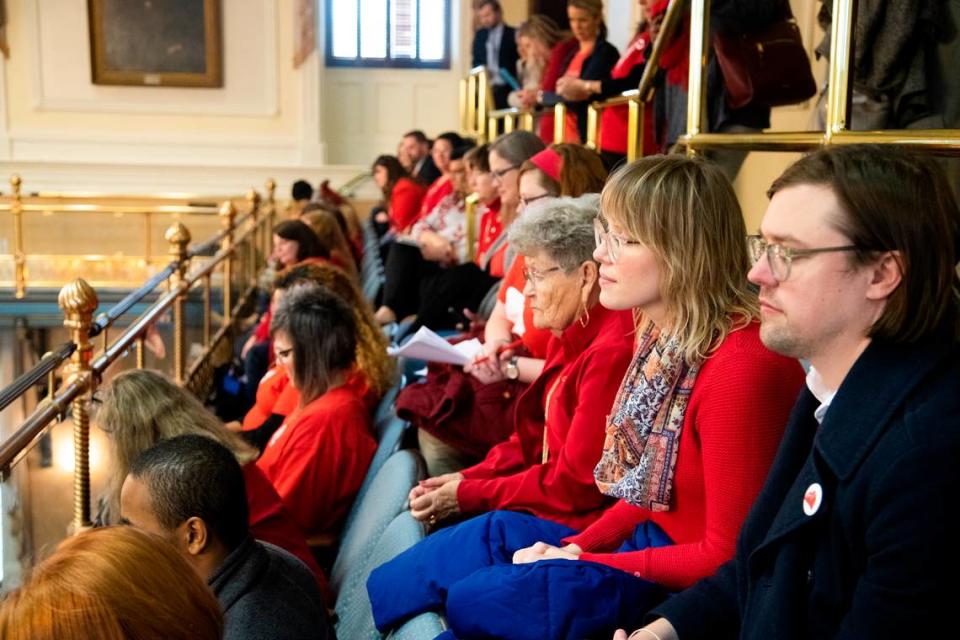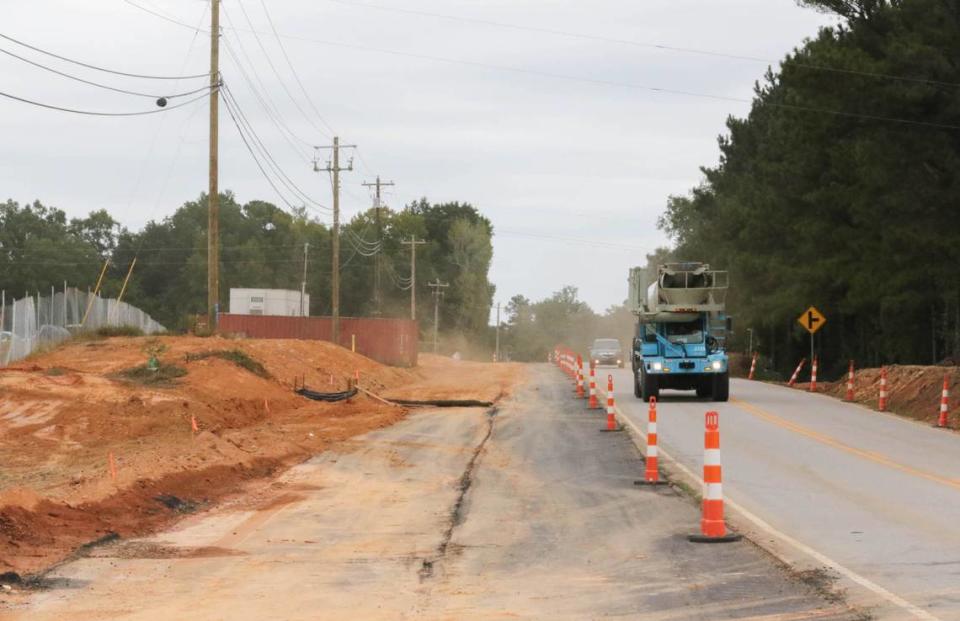SC college tuition could increase if lawmakers can’t agree on how much cash schools get
South Carolina college students face the possibility of seeing tuition rates increase even though lawmakers plan to provide money to public universities to keep tuition rates and fees frozen for the fourth straight year, one House budget writer said.
A disparity in how much the House and Senate want to give to public colleges and universities to keep tuition rates the same is among differences budget writers need to work out when a conference committee begins meeting this week to finalize a spending plan.
They have to try to bridge a gap in the proposed budgets, which are more than $1 billion apart.
Here are some of those key differences:
Money to colleges and universities
Both the House and Senate want to give the state’s colleges and universities money to keep tuition rates frozen for in-state students at all public four-year and two-year institutions. It’s the fourth straight year tuition mitigation is being included in the budget.
While the House put in $55.3 million for tuition mitigation, the Senate proposed $40.7 million.
Although the Senate proposed less for colleges and universities to freeze tuition, its $40.7 million includes $7 million specifically for technical colleges to freeze tuition — something that wasn’t in the House budget.
If a college accepts the tuition mitigation money from the state, it must commit to not raising tuition for the year, even if the amount of money from the state is not enough to cover the school’s growing costs.
House Ways and Means Chairman Gary Simrill, R-York, said the Senate proposal would put colleges in a difficult positions of not having enough money to provide the tuition freeze.
“Colleges under that plan either have to not accept any of the tuition mitigation money to raise tuition, or accept the money and not have enough and go to another source. They can’t increase tuition,” Simrill said.
State Sen. Ronnie Cromer, R-Newberry, who leads a panel of senators that oversees higher education spending, acknowledged the lower amount of money for tuition mitigation was because senators opted for a larger tax cut this year and a tax rebate.
“There were so many items that were cut, not just in the higher education budget but also all of the other subcommittees combined,” Cromer said, citing the larger immediate income tax and a $1 billion rebate plan proposed in the Senate budget. “Instead of cutting it all out, in most cases we tried to keep (it) somewhere close in higher education to what the House had in there, but we couldn’t put exactly the same amount in.”
Cromer said colleges and universities have other sources of revenue they could use to keep tuition frozen if the mitigation money isn’t enough. He also said he expected the conference committee to restore some of the money.
“If you talk about the overall higher education budget, that is minuscule compared to the total amount of the higher education budget,” Cromer said. “I really don’t think that would cause too much concern with the colleges and universities on not being able to maintain the same level of tuition.”
The University of South Carolina already has announced it would not raise tuition next school year.
“Our students appreciate the tuition mitigation funds appropriated by the General Assembly in recent years,” university spokesman Jeff Stensland said in a email to The State. “We are very concerned about the effects of economic inflation on tuition prices, and we are advocating for every bit of state support in order to maintain college affordability for students and their families.”
The tuition mitigation dollars have allowed Clemson University to freeze tuition rates for the last two years, university spokesman Joe Galbraith said.
“We are immensely grateful for this support. Since the budget continues to be debated, we believe it would be premature to comment on a likely outcome,” Galbraith said. “Clemson continues to work with the members of the conference committee and stress the importance of tuition mitigation funding.”
Some universities, however, worry a reduction in tuition mitigation money may force some difficult conversations next year.
Winthrop University in Rock Hill, for example, would receive $2.7 million in tuition mitigation money under the House plan, but only $1.6 million in the Senate plan.
Justin Oates, the school’s vice president for finance and business affairs, said the school plans to keep tuition rates frozen for the 2022-23 school year, but that a smaller amount of tuition mitigation money may lead to a discussion for the following year about what to charge for tuition.
Tuition at Winthrop was last increased in 2018, Oates said.
“I don’t think our board would turn around and immediately raise tuition right away, but it does put pressure on us as we go into next fall, which is a year away,” he said. “We would have to make up for the lost revenue that we were kind of anticipating.
“Look at what’s happening with inflation right now,” Oates added. “That’s driving all of our costs up.”
The size of the tax cut this year
Among the biggest points of contention between the proposed House and Senate spending plans are a proposed tax cut and tax rebate. Both chambers want to cut taxes and eventually keep $1 billion out of state coffers. How quickly the General Assembly will get to that $1 billion mark is up in the air.
The House budget cuts $600 million in income taxes this year by lowering the top income tax rate from 7% to 6.5% and combining the other brackets to 3%.
If the economy continues to grow, the top rate would gradually decrease over the course of five years until it reaches 6%. That would eventually keep $1 billion a year out of state coffers.
The Senate tax cut plan immediately cuts $1 billion in taxes, by reducing the top rate from 7% to 5.7% and cutting the manufacturing property tax rate.
Senators also want to send $1 billion back to tax filers in the form of a rebate. Every income tax filer would get between $100 and $700 back depending on their tax liability.
“It sounds to me the biggest sticking point is going to be $1 billion between the Senate rebate and the House wanting to spend it on pork projects back home,” said Senate Majority Leader Shane Massey, R-Edgefield. “That’s going to be a big issue that’s going to have to get worked out. There are a number of other issues because the spending levels are different, so they’re going to have to reconcile that.”
Teacher pay
The two budgets pay teachers differently, with the House wanting to raise the state’s starting pay for teachers to $40,000. The Senate wants to set it at $38,000. Both are increases from the current $36,000 base pay.
Setting starting pay at $40,000 is supported by teachers groups, outgoing state Superintendent of Education Molly Spearman and even Gov. Henry McMaster, who initially supported the $38,000 level.
Both moves, however, just set the minimum salary schedule and don’t guarantee raises for every teacher in the state. School districts already paying above the state’s base salary schedule, which says what teachers should earn based on education and experience, would not have to increase pay.

School funding formula
But how much to pay teachers isn’t the only difference when it comes to education. While both proposed budgets spend $3.6 billion on kindergarten through 12th grade education, the two chambers slice the pie differently.
The $3.6 billion includes $227 million in new money for education. The House wants to give a larger influx to poorer rural school districts that have a harder time raising money from property taxes. So the House would distribute the entire $3.6 billion education pot under a new formula that gives school districts flexibility in how the spend the money.
The Senate plan only distributes the $227 million in new money under the new formula, which would not benefit poorer districts as much as the House plan. This also means wealthier districts do better under the Senate plan.
State employee bonuses
House budget writers want to give every state employee a $1,500 bonus as a reward for working through the COVID-19 pandemic, which would cost $45.7 million.
Senate budget writers didn’t agree with the idea, pointing out the Senate plans for a tax rebate for all tax filers.
Any bonus would be in addition to the 3% pay across the board pay raise state employees both chambers have agreed to.
How much to spend on earmarks
Every year, lawmakers have their pet projects they want to direct money to — dubbed “earmarks” — and requests in each budget aren’t always in immediate agreement. Sometimes a request is listed in one version of the budget but not the other.
The Senate, because of its $1 billion rebate, had less money to spend on member projects and proposed $91 million in earmarks. The House proposed $327 million in earmarks.
“As members of the General Assembly, you seek and work to help your constituents back home,” Simrill said. “What we do is important as policy makers and representatives of people back home. The same applies when you have issues back home that require attention. “
Savannah River Site settlement cash
South Carolina has $525 million of federal money from the Savannah River Site settlement that lawmakers need to distribute.
The House wants use some of that money on the Port of Charleston, with the remainder going to projects in Aiken, Barnwell and Allendale counties, the three counties the host the Savannah River Site.
The Senate wants to pay for projects in the three counties that include the Savannah River Site, as well as projects in adjacent counties, and with money going to county transportation committees to pay for local road projects.

Money for roads
The House and Senate have differences in how much they provide for road dollars.
Among those differences is how much they want to give to the South Carolina Department of Transportation in annual money to act as a match to obtain federal matching dollars through the federal infrastructure bill. The Senate proposed $100 million. The House suggested $120 million.
The additional money the House proposed would allow the state’s transportation department to access money other states are unable to collect, Simrill said.
House members also included $176 million for rural interstate work, something the Senate didn’t include.
The Senate also wants to use $131 million of Savannah River Site settlement money to give to county transportation committees for local road projects.
The House budget includes an additional $250 million for county transportation committees.
“All 46 counties have the ability to have work done in them,” Simrill said.


